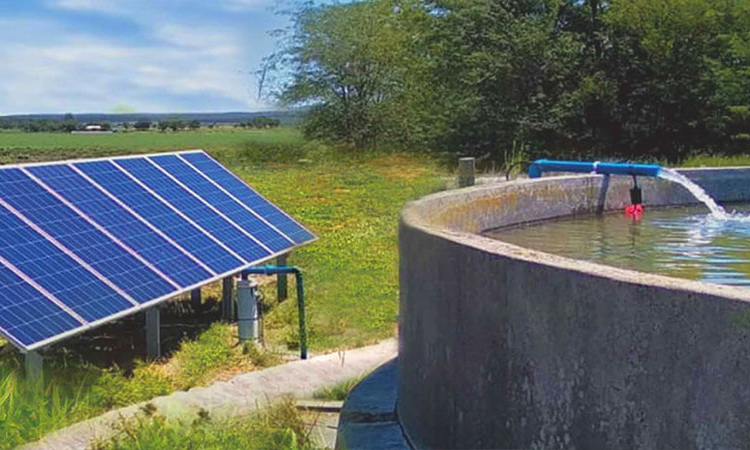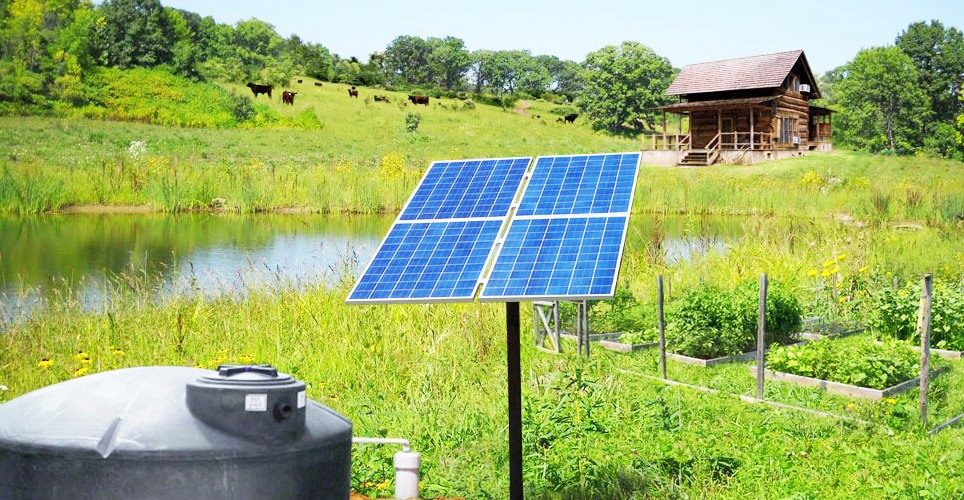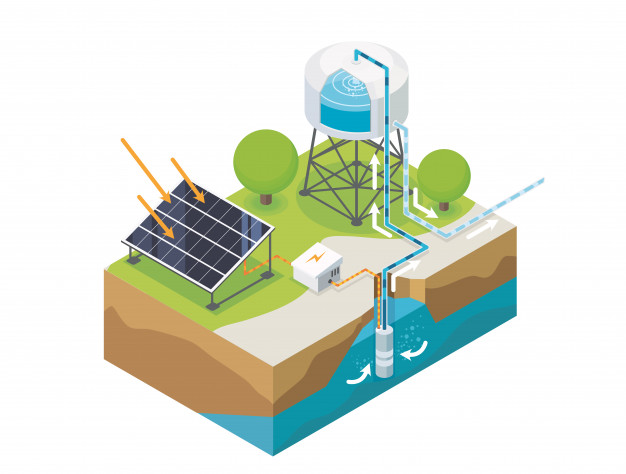Solar water pump system
Solar water pump system
A solar water pump system is a sustainable and efficient way to meet water pumping needs without relying on grid electricity or fossil fuels. Here's an overview of the components and considerations involved in setting up a solar water pump system:

1. Water requirements:
Determine the specific water requirements for your application, such as irrigation, livestock watering, or domestic use. This will help determine the size and capacity of the solar water pump system needed.
2. Solar panels:
Select high-quality solar panels that can generate enough power to meet the pump's energy demands. Consider factors like panel efficiency, durability, and suitability for the local climate conditions.
3. Solar pump:
Choose a solar-powered pump suitable for your application. There are different types available, including submersible pumps for wells, surface pumps for open water sources, and booster pumps for water pressure enhancement.
4. Mounting structures:
Depending on the setup, you may need mounting structures to securely install the solar panels. These can be ground-mounted, roof-mounted, or pole-mounted, depending on space availability and preference.
5. Controls and electronics:
Install the necessary controls and electronics to regulate the operation of the solar water pump system. This includes components like motor controllers, sensors, and inverters to convert DC power from the solar panels into AC power for the pump.

6. Storage and backup:
Consider incorporating a storage solution such as batteries or water tanks to store excess energy or water for later use. This can ensure a consistent water supply even during periods of low sunlight or increased demand.
7. Piping and distribution:
Plan the piping and distribution system to transport the pumped water to its intended destination. Ensure proper sizing, materials, and installation techniques to optimize water flow and minimize losses.
8. Maintenance and monitoring:
Regularly inspect and maintain the solar panels, pump, and other system components to ensure efficient and reliable operation. Implement a monitoring system to track power generation, water flow, and any potential issues that may require attention.

9. Safety and protection:
Implement safety measures to protect the system from voltage surges, lightning strikes, and other potential hazards. Proper grounding and surge protection devices are essential to safeguard both the equipment and personnel.
10. Training and operation:
Provide training to users or operators on how to operate and maintain the solar water pump system effectively. This will ensure its longevity and maximize its benefits.
It's advisable to consult with experienced solar water pump professionals who can assess your specific requirements, site conditions, and local regulations to design a system tailored to your needs. Additionally, consider the availability of government incentives or grants that may help offset installation costs and make your project more economically viable.

